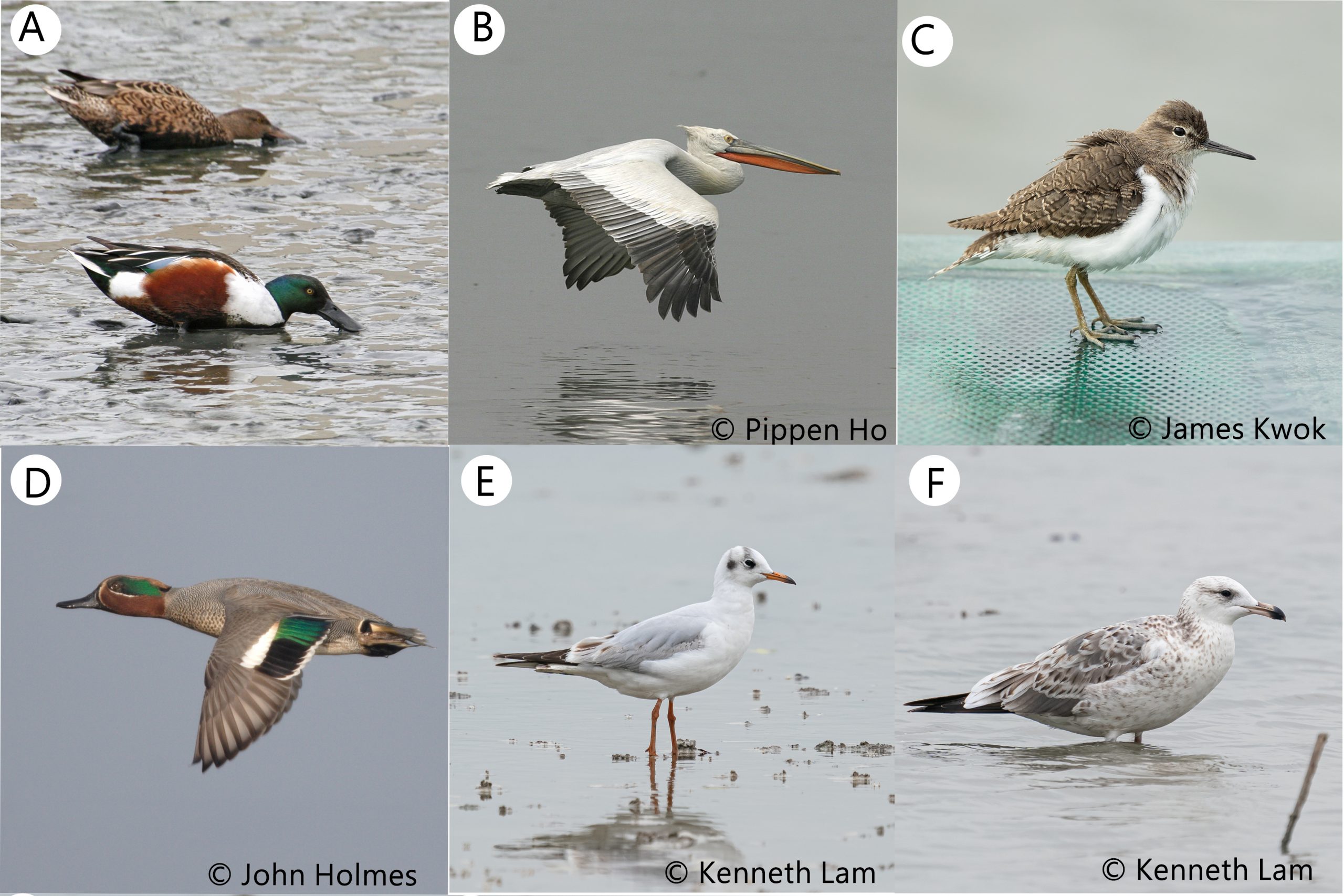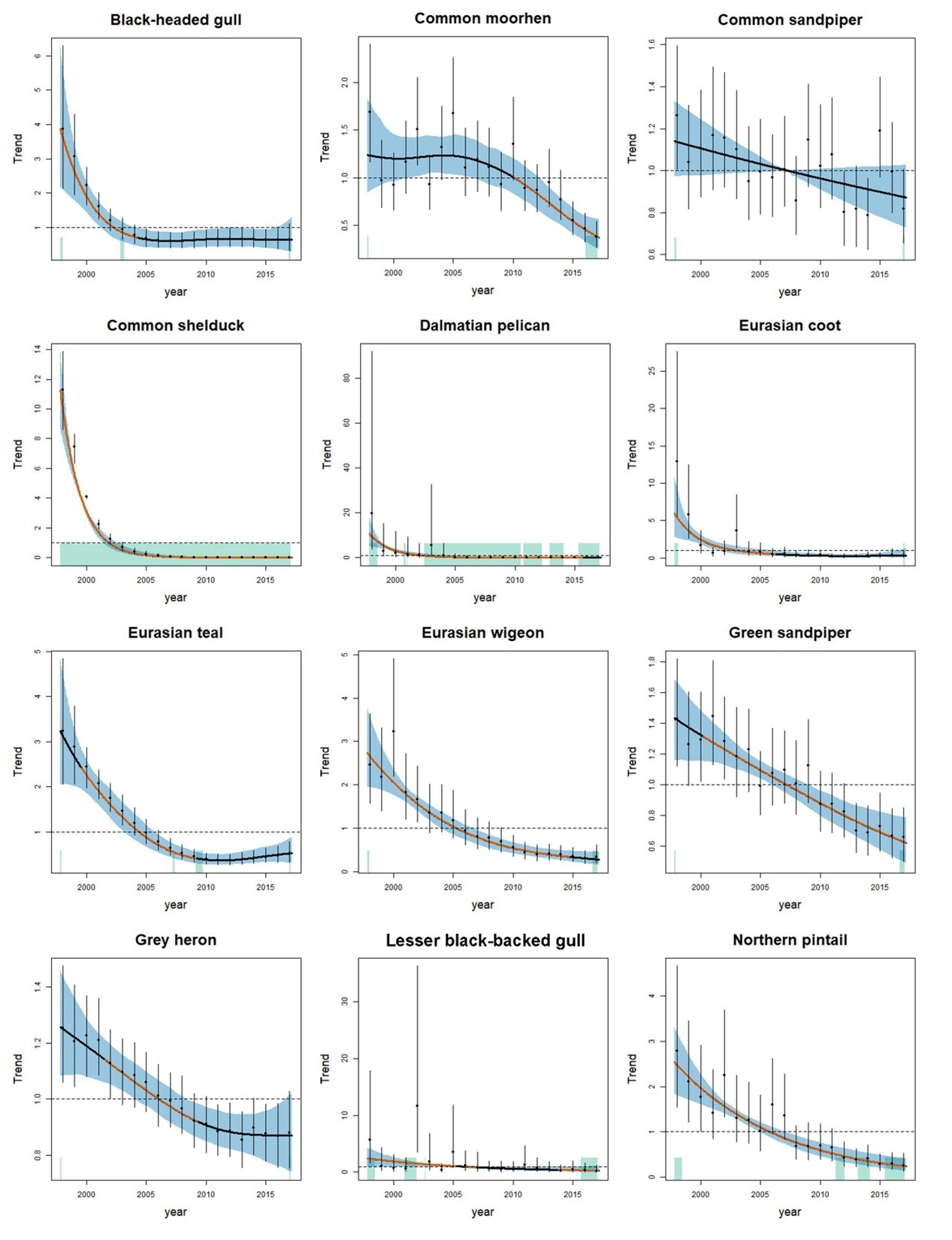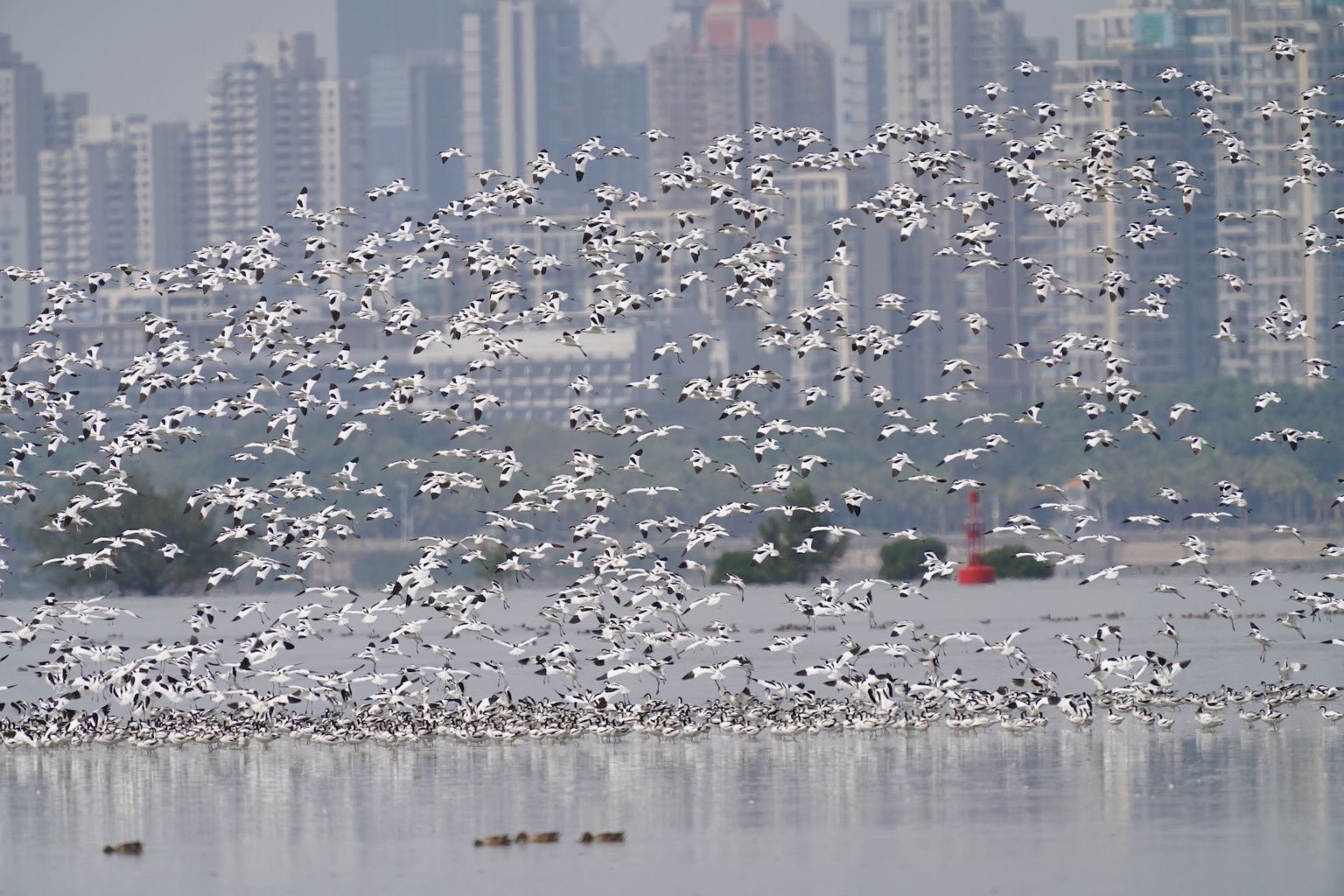Along the East Asian-Australasian flyway (EAAF), waterbirds are threatened by a wide range of environmental and anthropogenic factors. Habitat transformation along the coast of China, especially in the Yellow Sea area, has caused prominent declines of several species. Besides, waterbirds of the EAAF also experience a wide range of other threats, including hunting, alien invasive species, pollution, and climate change. Long-term monitoring data, especially birds, would provide insights of the impact of environmental changes to the nature, not only at local level, but regional level.

Fig. 1. Waterbird species experiencing population declines in the Deep Bay area, Hong Kong, over the recent two decades: A, Northern Shoveler; B, Dalmatian Pelican; C, Common Sandpiper; D, Eurasian Teal; E, Black-headed Gull and F, Lesser Black-backed Gull.
Ecologists have attempted to quantify the population trends of migratory waterbirds in China, but the trends of nearly half of species were unknown because of the lack of long-term, systematic data. Given that the Hong Kong Bird Watching Society (HKBWS, EAAFP Partner) started to conduct surveys on wintering waterbirds in the Deep Bay area since 1979, the dataset is from the longest (≥20 years) systematic survey of wintering waterbird populations along the coast of China. HKBWS, collaborated with the Lingnan University, made use of this 20-years waterbird survey data for evaluating the impacts of different threats along the EAAF.
The researchers looked at the population trends of 42 waterbird species that regularly winter in the Deep Bay area, 12 species declined (Black-headed Gull, Common Moorhen, Common Sandpiper, Common Shelduck, Dalmatian Pelican, Eurasian Coot, Eurasian Teal, Eurasian Wigeon, Green Sandpiper, Grey Heron, Lesser Black-backed Gull, Northern Pintail) while nine increased significantly (Black-faced Spoonbill, Black-winged Stilt, Chinese Pond Heron, Common Greenshank, Eurasian Curlew, Great Knot, Little Grebe, Pacific Golden Plover, Pied Avocet). Nonetheless, Eurasian Coot, Northern Pintail and Dalmatian Pelican, were shown to have regional dwindling populations along the EAAF and deserve immediate conservation attention. In contrary, Black-faced Spoonbill is the only species with sufficient data elsewhere supporting a population increase at a regional scale due to international conservation efforts for almost three decades.

Fig. 2. Population trends of twelve species of wintering waterbirds that showed a significantly decreasing trend from 1998 to 2017 in the inner Deep Bay area.
Remote sensing images confirmed that the habitat changes of the Deep Bay area were relatively small over the two decades. Thus, the detected population trends of many waterbirds may possibly be associated with their breeding grounds and stopover sites. The researchers found that species breeding in Southern Siberia declined more than those breeding in High Arctic. It is possible that Southern Siberia experienced region-wide habitat degradation. In addition, species relying Yellow Sea as a staging site declined more than other species, which had been repeatedly reported by previous studies along the EAAF. Urgent conservation actions are essential to reverse the negative impacts of the rapid habitat loss and degradation in the area, especially coastal reclamation. Lastly, larger species declined more than smaller species, as large species are favored by contemporary hunters.
These findings support the continual preservation of wetlands in the Deep Bay area. The study provides another case study showing that data collected from wintering sites provide insights on the threats along migratory pathway and inform conservation actions. As such, we encourage population surveys in the EAAF to continue, particularly along the coast of China.
Read the full publication [here].

Deep Bay crowded with Pied Avocet ©Johnson Chung/HKBWS




